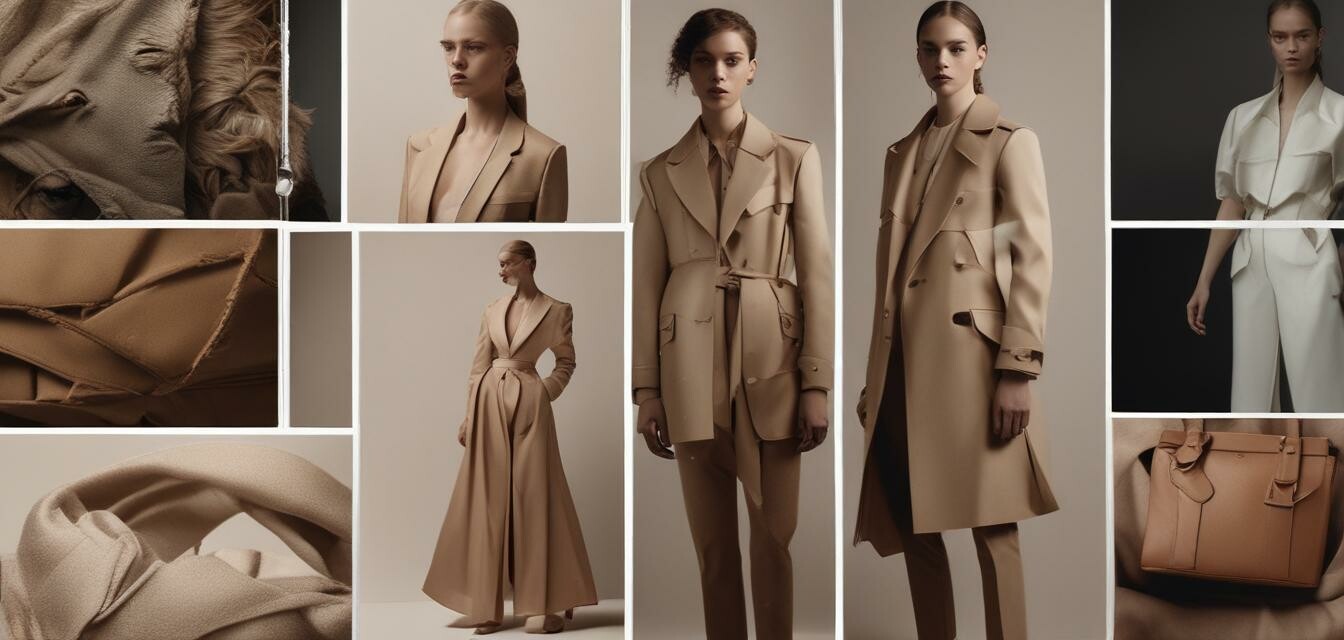
The Evolution of Luxury Fashion: 2025 Insights
Key Takeaways
- Luxury fashion is shifting towards sustainability.
- Consumer demands are influencing innovative designs.
- Diverse marketing strategies are being adopted.
- The integration of technology is reshaping the industry.
The luxury fashion industry is evolving in response to changing consumer demands and the growing importance of sustainability. As we approach 2025, let's take a closer look at the current landscape of luxury fashion, exploring innovative trends, significant changes, and the industry's future direction. This article aims to provide insights into how top brands are adapting to remain relevant and desirable among consumers.
Shifting towards sustainability
One of the most significant trends in luxury fashion is the shift towards sustainability. Brands are recognizing the need for responsible practices that address environmental and social issues. Here are some key aspects of this trend:
- Eco-friendly materials: More luxury brands are incorporating sustainable fabrics into their collections.
- Transparent supply chains: Consumers are increasingly demanding transparency in sourcing and production, prompting brands to disclose their practices.
- Investment in circular fashion: Luxury brands are promoting recycling and upcycling initiatives to reduce waste.
Table: Sustainability Practices in Luxury Fashion
| Brand | Sustainability Initiative | Impact on Brand Image |
|---|---|---|
| Brand A | Use of organic cotton | Enhanced eco-friendly perception |
| Brand B | Transparent supply chain reporting | Improved customer trust |
| Brand C | Recycling program for old garments | Positive community engagement |
Innovative designs driven by consumer demands
The evolving luxury market is also marked by new and innovative designs that cater to modern consumer preferences. With changing lifestyles, luxury brands are adapting their offerings:
- Versatile styles: Consumers are gravitating towards pieces that can transition from day to night.
- Inclusive sizing: Many brands now offer extended sizing to cater to a broader audience.
- Personalized products: Customizable options are becoming popular, allowing consumers to express their unique identities.
Examples of consumer-driven fashion trends
| Trend | Description | Example Brand |
|---|---|---|
| Streetwear influence | High-end meets casual for a luxe street style | Brand D |
| Luxury Athleisure | Combining comfort with style for everyday wear | Brand E |
| Wearable technology | Integrating tech into garments for functionality | Brand F |
Diverse marketing strategies
With the rise of social media and changing consumer behaviors, luxury brands are polishing their marketing strategies:
- Collaborations: Partnerships with influencers and popular brands are on the rise.
- Experiential marketing: Events and pop-up shops create memorable interactions with consumers.
- Digital-first strategies: Online presence and e-commerce capabilities are becoming essential to target tech-savvy shoppers.
Technology integration in luxury fashion
Technology is playing a pivotal role in transforming luxury fashion. Here are some technologies making significant impacts:
- Augmented Reality (AR): Virtual try-ons are enhancing the shopping experience.
- Artificial Intelligence (AI): AI is being used for personalized recommendations and customer service.
- Blockchain technology: This ensures authenticity and streamlined supply chain management.
Table: Tech Innovations in Luxury Fashion
| Innovation | Description | Benefits |
|---|---|---|
| AR for retail | Allows virtual fitting of clothing | Improves customer experience and reduces returns |
| AI chatbot assistance | Provides personalized customer support | Enhances satisfaction and engagement |
| Blockchain for authenticity | Confirms product origin and ownership | Builds trust and reduces counterfeits |
Conclusion
The luxury fashion landscape is in a constant state of flux. Brands that prioritize sustainability, adapt to consumer demands, and embrace technology will emerge stronger in 2025 and beyond. Those interested in the latest trends should remain vigilant and explore our News and Trends in Luxury Products section for continuous insights into this evolving market.
Tips for Consumers
- Stay informed about brands’ sustainability practices.
- Embrace personalization to find what suits your style.
- Engage with luxury brands through their online platforms for the latest offerings.
Pros
- Luxury fashion is becoming more sustainable.
- Brands are responding positively to consumer feedback.
- Integration of technology enhances shopping experiences.
Cons
- Some brands may struggle with authentic integration of sustainability.
- High price points can limit accessibility to all consumers.
- The fast pace of trends can lead to confusion among consumers.

